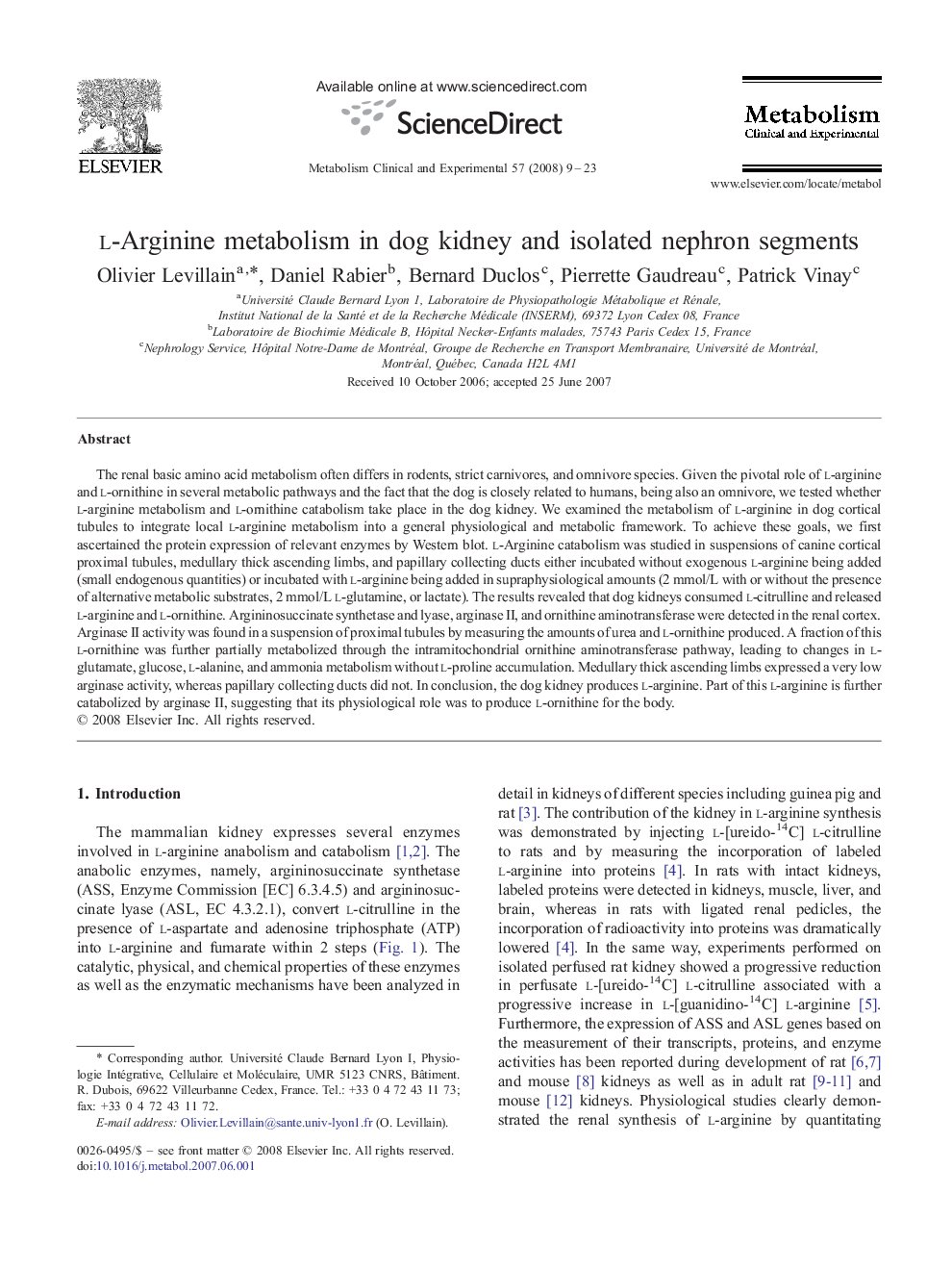| کد مقاله | کد نشریه | سال انتشار | مقاله انگلیسی | نسخه تمام متن |
|---|---|---|---|---|
| 2807498 | 1157171 | 2008 | 15 صفحه PDF | دانلود رایگان |
عنوان انگلیسی مقاله ISI
l-Arginine metabolism in dog kidney and isolated nephron segments
دانلود مقاله + سفارش ترجمه
دانلود مقاله ISI انگلیسی
رایگان برای ایرانیان
موضوعات مرتبط
علوم زیستی و بیوفناوری
بیوشیمی، ژنتیک و زیست شناسی مولکولی
علوم غدد
پیش نمایش صفحه اول مقاله

چکیده انگلیسی
The renal basic amino acid metabolism often differs in rodents, strict carnivores, and omnivore species. Given the pivotal role of l-arginine and l-ornithine in several metabolic pathways and the fact that the dog is closely related to humans, being also an omnivore, we tested whether l-arginine metabolism and l-ornithine catabolism take place in the dog kidney. We examined the metabolism of l-arginine in dog cortical tubules to integrate local l-arginine metabolism into a general physiological and metabolic framework. To achieve these goals, we first ascertained the protein expression of relevant enzymes by Western blot. l-Arginine catabolism was studied in suspensions of canine cortical proximal tubules, medullary thick ascending limbs, and papillary collecting ducts either incubated without exogenous l-arginine being added (small endogenous quantities) or incubated with l-arginine being added in supraphysiological amounts (2 mmol/L with or without the presence of alternative metabolic substrates, 2 mmol/L l-glutamine, or lactate). The results revealed that dog kidneys consumed l-citrulline and released l-arginine and l-ornithine. Argininosuccinate synthetase and lyase, arginase II, and ornithine aminotransferase were detected in the renal cortex. Arginase II activity was found in a suspension of proximal tubules by measuring the amounts of urea and l-ornithine produced. A fraction of this l-ornithine was further partially metabolized through the intramitochondrial ornithine aminotransferase pathway, leading to changes in l-glutamate, glucose, l-alanine, and ammonia metabolism without l-proline accumulation. Medullary thick ascending limbs expressed a very low arginase activity, whereas papillary collecting ducts did not. In conclusion, the dog kidney produces l-arginine. Part of this l-arginine is further catabolized by arginase II, suggesting that its physiological role was to produce l-ornithine for the body.
ناشر
Database: Elsevier - ScienceDirect (ساینس دایرکت)
Journal: Metabolism - Volume 57, Issue 1, January 2008, Pages 9-23
Journal: Metabolism - Volume 57, Issue 1, January 2008, Pages 9-23
نویسندگان
Olivier Levillain, Daniel Rabier, Bernard Duclos, Pierrette Gaudreau, Patrick Vinay,